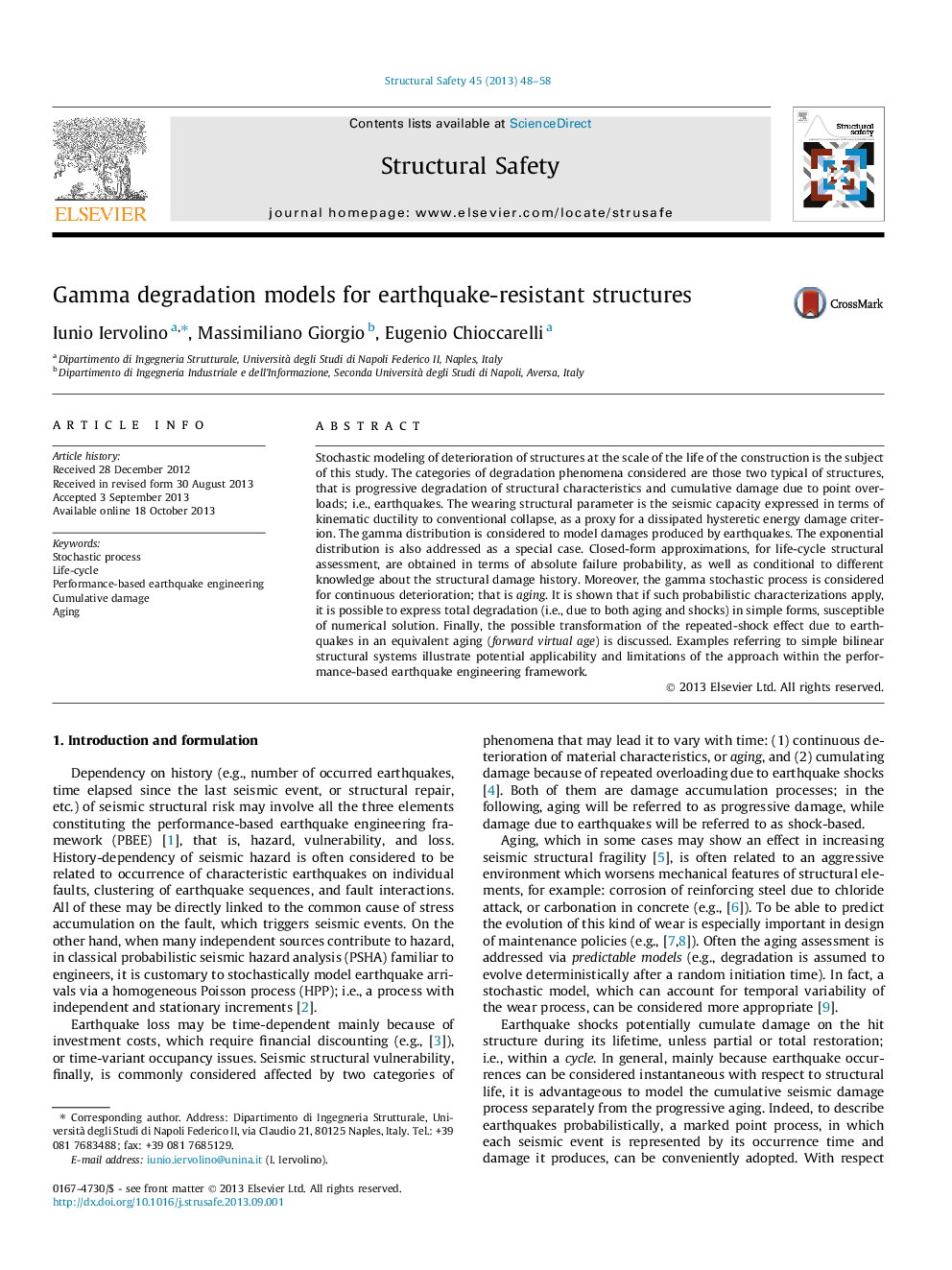| Article ID | Journal | Published Year | Pages | File Type |
|---|---|---|---|---|
| 307580 | Structural Safety | 2013 | 11 Pages |
•Age-dependent process modeling for degrading structures is addressed.•Deterioration considered is due to cumulative earthquake damage and aging.•Close-form solutions for reliability are derived.•Forward virtual-age concept is introduced.•Illustrative applications show suitability of assumptions and approximations.
Stochastic modeling of deterioration of structures at the scale of the life of the construction is the subject of this study. The categories of degradation phenomena considered are those two typical of structures, that is progressive degradation of structural characteristics and cumulative damage due to point overloads; i.e., earthquakes. The wearing structural parameter is the seismic capacity expressed in terms of kinematic ductility to conventional collapse, as a proxy for a dissipated hysteretic energy damage criterion. The gamma distribution is considered to model damages produced by earthquakes. The exponential distribution is also addressed as a special case. Closed-form approximations, for life-cycle structural assessment, are obtained in terms of absolute failure probability, as well as conditional to different knowledge about the structural damage history. Moreover, the gamma stochastic process is considered for continuous deterioration; that is aging. It is shown that if such probabilistic characterizations apply, it is possible to express total degradation (i.e., due to both aging and shocks) in simple forms, susceptible of numerical solution. Finally, the possible transformation of the repeated-shock effect due to earthquakes in an equivalent aging (forward virtual age) is discussed. Examples referring to simple bilinear structural systems illustrate potential applicability and limitations of the approach within the performance-based earthquake engineering framework.
Graphical abstractFigure optionsDownload full-size imageDownload as PowerPoint slidePossible representation of degradation versus time for a structure subjected to aging and repeated earthquake shocks, when both phenomena affect seismic capacity.
